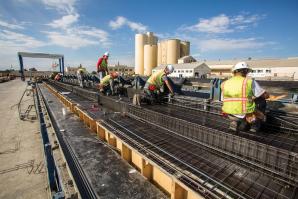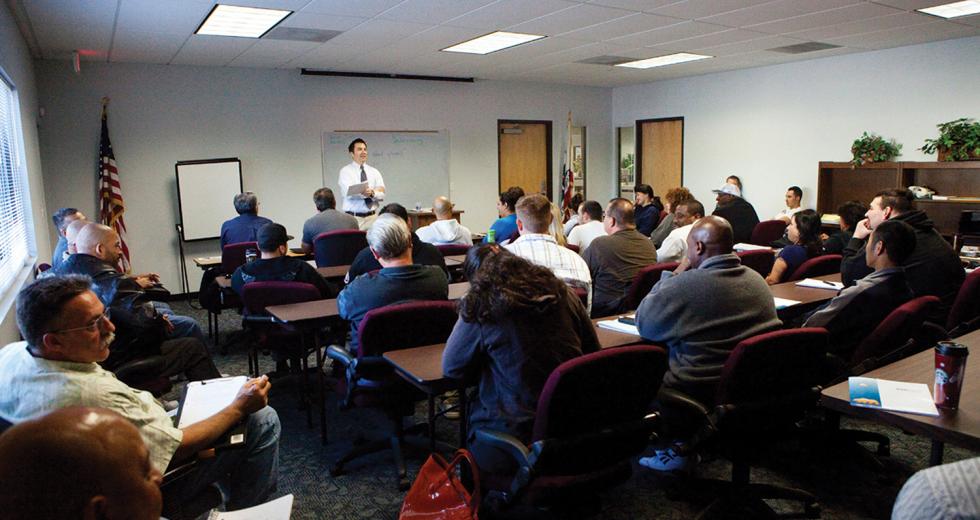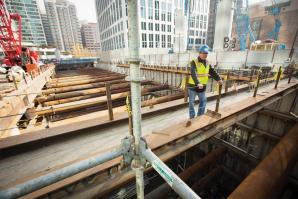San Joaquin County needed 3,000 more unemployed workers like it needed a hole in the head, but that’s what it got with the closing of the NUMMI auto plant in Fremont and the related layoffs at its major suppliers.
The closing of the New United Motor Manufacturing Inc. plant on April 1 delivered another blow to the economy of the northern San Joaquin Valley, where unemployment rates have already topped 18 percent. Some 900 of the plant’s nearly 5,000 workers commuted each day from Stockton and the surrounding county, and officials estimate that job losses from major suppliers will bring the total to about 3,000.
By itself, a job loss of that scale is enough to drive the local unemployment rate past 19 percent. It works out to roughly one of every six manufacturing workers employed in San Joaquin County in March 2010, and about 37 percent of all workers who made durable goods.
“It’s going to have a significant impact on our community,” says John Solis, executive director of San Joaquin County WorkNet, the service arm of the local work force investment board.
And given the still-wobbly state of the economy — and the nature of the local auto industry as it evolved to serve NUMMI — that impact could last for years. The surprise announcement in May that Tesla Motors plans to team up with Toyota to buy the NUMMI plant and make electric cars was welcome, but production wouldn’t start until 2012 and only about 1,000 workers would be hired.
Local employment advocates are working along multiple paths to help displaced workers find their way back to jobs. In the near term, they’re stressing education for workers, incentives for companies that provide on-the-job training and tax breaks for employers in the Stockton enterprise zone that hire them. Long-range, they’re touting the advantages of San Joaquin County to lure new employers and recruiting companies that might want to take over the vacant factories.
The San Joaquin Partnership has already had nibbles of interest for one manufacturing site and has made recruiting trips to Atlanta and Chicago in search of new employers, says president and chief executive Mike Locke. “We’re trying to demonstrate that this is still the center point for about 48 million people” in six Western states, he says, with great access to highways, rail and port shipping.
Some 500 jobs will come to town through the 2008 purchase of the Kragen auto parts chain by O’Reilly Automotive Inc., which is moving some workers from Dixon and centralizing regional distribution in Stockton, he says.
O’Reilly, Locke says, has a strong customer service group, which matches well with a similar emphasis at the automaker and its suppliers.
But NUMMI’s high-wage union workers could find it hard to match their old paychecks at a new job, and the specialized, high-volume, highly automated production lines typical of its major suppliers could make it tough for them to switch to other local work without retraining.
NUMMI, the largest employer in Fremont, began operating in 1984 as a joint venture between General Motors and Toyota Motor Corp.
Amid financial woes, GM announced that it would halt production of the Pontiac Vibe at the plant and pull out as of August 2009. That same month, Toyota announced it would end production of Corolla cars and Tacoma trucks there by April 1.
In addition to about 5,000 workers at the NUMMI plant, the shutdown was expected to affect 20,000 or more workers at suppliers, transportation companies and other support businesses.
San Joaquin County was the No. 2 location for NUMMI suppliers in California, second only to Alameda County. While estimates vary, Solis says there are 10 “Tier 1” suppliers to the auto plant in the county, and even before secondary economic effects the plant shutdown was expected to directly leave 3,200 people without jobs there.
The shutdown was expected to affect 20,000 or more workers at suppliers, transportation companies and other support businesses.
Most of the major suppliers are Japanese-owned, some by partnerships that include Toyota. They tend to be specialized, high-volume, and built around the demands of NUMMI as their biggest or only customer. Kyoho Manufacturing California, for example, opened in Stockton in 2008 in a 260,000-square-foot plant to make stamped and welded metal body parts; Kyoho is a Toyota subsidiary and told county officials it would lay off all 154 workers effective April 1. Company executives could not be reached.
Such “captive” or near-captive suppliers were hit hardest by the closing. A study for Alameda County by the Corporation for Manufacturing Excellence (Manex) found that diversified suppliers had the best chance of survival, while captive or near-captive suppliers were likely to fail.
“Despite operational excellence and skilled work forces, several no longer have the innovation, strategy development, marketing or sales skills required to design new marketable products or to identify or penetrate new markets,” Manex CEO Brent Meyers said in a March news release.
Premier Finishing of Stockton was one of the survivors. The company painted plastic center consoles, cup holders and other Vibe and Tacoma parts for another NUMMI supplier. Those parts, though, only made up about 20 percent of Premier’s business, says president Craig Walters. Half that work went away last year with GM’s exit, but Premier is still working on Tacoma parts that now are assembled elsewhere.
“We have a pretty diverse customer base, including medical, military and automotive, both for manufacturers and after-market,” Walters says. “That diversification was what kept our doors open.”
That doesn’t mean the transition has been painless. Premier spent $800,000 to set up two high-tech conveyor lines with robotic spraying and curing ovens to serve the NUMMI orders, but didn’t recoup its investment, Walters says. “Our plans for recovering that capital were based on three years of production, and we had a run of about a year and a half.”
The company is now looking for another customer that will put that production line to work.
Walters said in April he was looking to possibly hire a couple of skilled workers who lost their jobs in the NUMMI shutdown. “I do feel there’s going to be some pretty good absorption,” but a lot depends on the broader economy and the business climate in California, he says.
And the numbers and circumstances are daunting. As of late April, San Joaquin’s WorkNet had enrolled and was delivering assistance or training to about 1,000 people affected by the closings, says Debbie Duplichan, the program’s “rapid-response” coordinator.
But few will likely find work in manufacturing, particularly at the $20-plus per hour union wages that the NUMMI plant paid its experienced workers, she says. Many are looking to retrain for work in the medical field; heavy equipment operation; heating, ventilation and air conditioning; or emerging “green-tech” fields. Some may land with an electric carmaker looking to start a plant in the region.
For many, the transition will be long and tough. “With overtime, they could make $100,000 a year at NUMMI,” Duplichan says. “We are not going to have a $100,000 wage with a high-school education. … You have individuals who have not filled out an application or gone on an interview in 25 years. The job market has changed, and the world has changed.”
Recommended For You

Home Field Advantage
Clark Pacific's winning stadium bid scores big for the region
The day Clark Pacific won the bid to provide the concrete components for the 49ers’ new football stadium in Santa Clara was a day for much celebration. It was a $20 million award. It meant new jobs. It meant an economic boost for the region.




